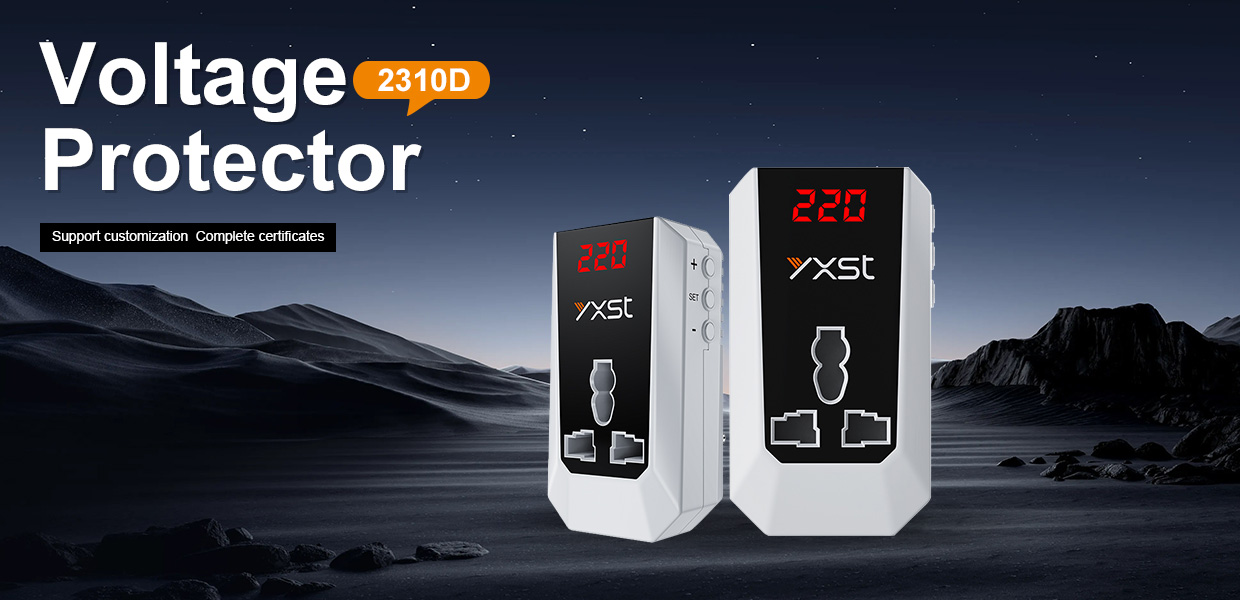Installing a TV power protector in a home environment is essential to protect electrical equipment. TV power protectors can prevent transient overvoltages caused by lightning strikes, power grid fluctuations, and other electrical disturbances, avoiding damage to home appliances and electronic equipment.
The necessity of installing a TV power protector
Unstable power supply:
In areas with unstable power supply, TV power protectors can effectively prevent damage to TVs caused by voltage fluctuations or sudden power outages.
Changeable climate:
In areas with changeable climate, there is a higher risk of lightning strikes and sudden power outages, and anti-TV power protectors can provide additional protection.

Investment protection:
85-inch TVs are usually high-value TV equipment. If you want to maximize the protection of your investment and ensure the long life and reliability of the TV, installing an automatic voltage protector may be a wise choice.
Risk assessment:
Assess the environmental factors and risk conditions in your area. If you live in an area with frequent lightning, a place with large power fluctuations, or other electronic equipment nearby that may cause electromagnetic interference, installing a protector can reduce the risk of damage to TV equipment.
TV power protector selection
The selection of TV power protector is mainly based on the following key factors: the TV’s power, voltage, and model.

Power matching:
TVs of different power require power protectors of varying power. Generally speaking, the larger the power of a TV, the larger the power required. You can determine the power of the TV by checking the label or manual of the TV or using a power meter to test it.
Voltage matching:
The power protector’s voltage should match the TV’s. TVs in mainland China are generally 220V, but the voltage of some imported TVs may be different. Therefore, when choosing a power protector, you need to confirm the TV’s voltage and ensure that the power protector’s voltage matches it.
Model matching:
Different models of TVs require different models of power protectors. When choosing a power protector, you should match it according to the model of the TV to ensure that the power protector is compatible with the TV.
Generally speaking, the TV power protector should be installed on the side close to the power supply line. This is because the power supply line is the high-voltage part of the circuit. If the voltage is abnormal, the power supply line will be affected first. Installing the voltage protector near the power supply line can ensure that the circuit can be cut off in time when the voltage is abnormal, preventing the equipment from being damaged.
When determining the installation location of the voltage protector, the following factors also need to be considered:
Rated voltage and current of the equipment. The rated voltage and current of the voltage protector should match the rated voltage and current of the protected equipment to ensure that the voltage protector can work properly.
Layout and structure of the circuit. When installing a TV Guard, it is necessary to consider the layout and structure of the circuit to ensure that the voltage protector can be easily connected to the circuit and will not affect the normal operation of the circuit.
Safety regulations and operating requirements. When installing the voltage protector, the relevant safety regulations and operating requirements should be followed to ensure that the installation process is safe and reliable and avoid accidents.
In short, when installing a TV Power Guard, determining which side is close to the line is a very important step. By understanding the working principle and installation requirements of the voltage protector, we can install the voltage protector more safely and effectively to ensure the stable operation of the power system. At the same time, during the installation process, we also need to pay attention to the relevant safety regulations and operating requirements to ensure that the installation process is safe and reliable.




